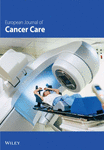Editorial
There is a growing interest in cancer patient narratives, the individual accounts of a patient’s experience of cancer anywhere along the illness trajectory. Many books are published each year, some of which find their way into health care establishments and university departments and libraries. Students of cancer and palliative care read them. There is clearly a value in hearing a patient’s account of his experience, however idiosyncratic it may be. However, with limited time and even more to read how can such stories be used as a tool for learning? Can these narratives be considered as part of the ‘evidence base’ for informed practice? Those of you who read the FACET pages in the last issue of EJCC may have had some reaction to Bobbie Farsides’ prompts. If you did we would love to hear from you. If you have not yet had the chance to catch up on your reading we look forward to your response in due course. With such a wealth of ‘data’ and increasing involvement of patients in a variety of health care activities – committees who design clinical trials, the establishment of patient education and support groups, political lobbying for greater access to the best available treatments for cancer – maybe it is increasingly important that we utilise their experiences to inform our work. I would like to challenge readers of EJCC who are skilled in research methodology to consider how these personal case studies can be more effectively used in a systematic way, if indeed they can.
Patient influence in accessing appropriate treatment for cancer is growing, particularly where inequalities are obvious and appear to be the result of irrational decisions. Examples of non-governmental organizations (NGOs) facilitating and supporting cancer patients’ requests for the current best treatment for their cancer are increasing, particularly if it is very expensive chemotherapy in a culture of severe budget cuts and constraints. The Dutch Cancer Society recently established a group – which included patients with ovarian and breast cancers – to challenge the government over the inequalities of prescribing taxoids. Some hospitals were prepared to cut from other sections of their limited budget to free up money for these newer, more effective drugs, whilst others were either unwilling or unable to do so. The lobbying of the group resulted in the Dutch government agreeing to provide a separate, ring-fenced central budget for the use of taxoids for these two cancers (but not currently for some of the lung cancers). However, this is only a temporary solution for a limited time, and then what? There will be new issues occurring like this all the time but the pot of funds for health care is not bottomless. Similar discussions on resources have taken place for palliative cancer care also. Should palliative care be a right for all cancer patients – and indeed non-cancer patients with a life-limiting illness – or must it remain a luxury rather than a core service? Who decides on the answers to these questions? As health care is relevant to every European citizen, every citizen who wishes should have a voice and a way of making that voice heard. Sometimes cancer societies facilitate this – as in the case of the Netherlands. Sometimes patients themselves make the approach directly through the self-help movement. In the UK a ‘Debate of the Age’ has been established to provide a forum for every citizen to offer solutions to the challenges raised by demographic trends which will have a major impact on our lives in the 21st century. The current government has made a commitment to consider the findings of a report from the considerable contributions already made, early in the year 2000.
Perhaps European patient groups may be a way forward rather than the national ones. In the USA patients are more organised to form groups and lobby for their rights to the best treatments for cancer as it becomes ever more apparent that there is rationing of treatment, whatever label you put on it. Something has to be done to acquire a more equitable approach to cancer treatment and care. Perhaps the patients in Europe should lobby the European Commission itself. The recent first European Health Forum held in Austria at the end of last year, included discussions on the EU’s role in public health and the challenges and opportunities for expanding the EU health market. the closing speech of the Forum by the Commissioner, Padraig Flynn, stressed the new challenges for European health care with rising numbers of older people, lower birth rates and the expensive developments in high technology medicine. It seems that the budgets will become tighter yet. The advent of the single currency will facilitate an easier comparison between countries of health care costs – goods and services. It may also be possible to compare the quality of both more easily. It seems that the Finnish presidency in the second half of 1999 will be considering this as it sets the guidelines for the EU’s future health policy.




